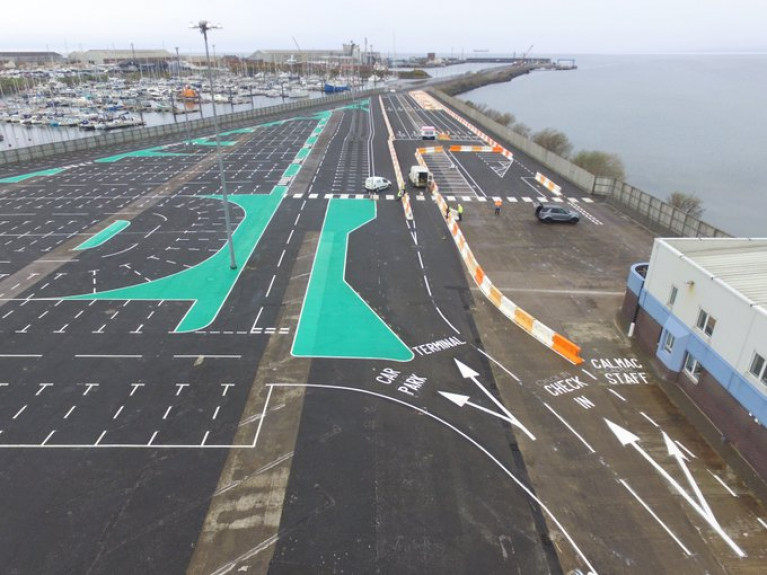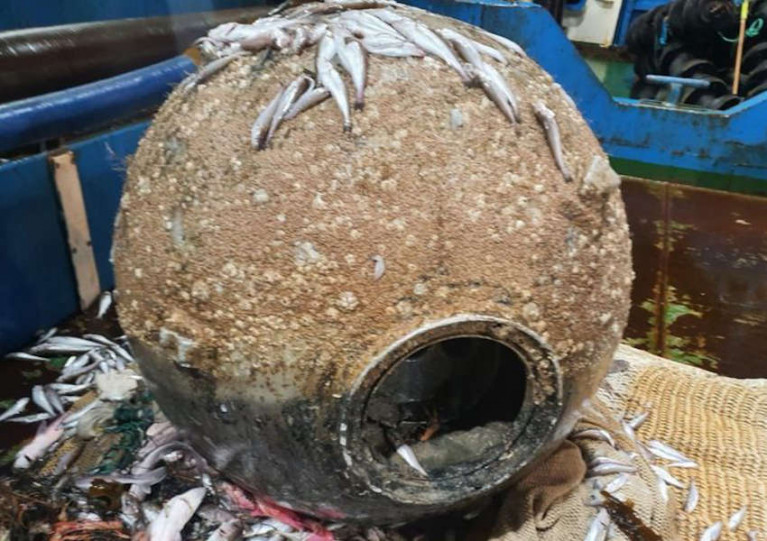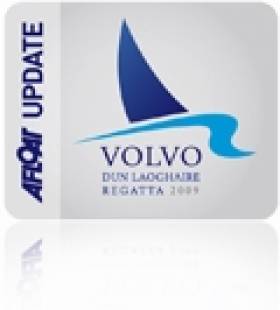Displaying items by tag: Troon
Upgraded Ferry Terminal at ABP’s Port of Troon Now Completed
An upgraded ferry terminal at the Scottish port of Troon, operated by Associated British Ports (ABP) has been announced following marine works including new berthing fenders and a suspended concrete deck were completed.
The works carried out by civil engineering contractor George Leslie, are to support the CalMac ferry service to Ardrossan-Brodick/Campbeltown when it temporarily relocates to Troon (see Easter ferry related story) as part of the Ardrossan Harbour Project.
With the marine works complete, the focus at Troon now shifts to the completion of the required shoreside infrastructure, including the installation of a modular terminal building, extensive car parking, check-in lanes and pickup and drop-off areas. All of these works are scheduled to be completed by this summer
Commenting on the project’s completion, ABP’s Regional Director Andrew Harston said: “It is great to reach such an important milestone in the project and I am hugely proud of the local ABP team and our civil engineering contractors, George Leslie, who have worked so well together to deliver this on time and within budget.”
The berth upgrade has been designed to accommodate both of CalMac’s existing ferries and the newbuild M.V.Glen Sannox class of vessel which is due to enter into service next year.
Andrew Harston commented: “We are hopeful that the Port of Troon’s sheltered East Pier berth and track record of offering all-weather berthing will play a major part in helping to support the Arran communities call for improvements in terms of the reliability and resilience of ferry services to the island.”
Survey Vessel Finds Unexploded World War II Mine Off Western Scotland
A World War II mine found in “remarkable” condition off western Scotland earlier this week contained 350kg of explosives, according to the Royal Navy.
The unexploded ordnance was discovered by a Marine Scotland survey vessel in the Firth of Clyde on Tuesday afternoon (1 December).
Belfast Coastguard tasked Troon RNLI to the scene, north-east the Isle of Arran, to retrieve non-essential personnel from the 68m survey vessel and bring them to safety on the lifeboat.
As BBC News reports, the survey vessel was then sailed to Ettrick Bay on the Isle of Bute, where bomb disposal experts carried out a controlled explosion of the mine.
“From the initial pictures, we were able to easily identify the mine type and importantly determine that the explosive fill was intact and therefore presented a significant hazard,” said Lieutenant Commander Mark Shaw of the Royal Navy.
BBC News has more on the story HERE.
Irish Sea Events Offer Entry Discounts
"The way this works is that the Clyde Cruising Club are offering a 25% rebate for boats from the 4 Dun Laoghaire Clubs (DMYC, NYC, RIYC, RStGYC) that enter the Brewin Dolphin Scottish series before the expiration of the early bird discount period which expires on April 22nd explained Dun Laoghaire event secretary, Ciara Dowling.
As a reciprocal arrangement the committee of the Volvo Dun Laoghaire Regatta are offering a discount of 50% from the full entry fee to all boats that enter both regattas. To avail of this, boats must register for the early bird entry fee in the Volvo Dun Laoghaire Regatta prior to 2 May 2011. Note the 50% discount will be applied to the full entry fee rate and not the early bird rate.
To avail of this arrangement for the Scottish Series contact the Brewin Dolphin Scottish Series office for details, [email protected] 0044141 221 2774.
To avail of this arrangement for the Volvo Dun Laoghaire regatta visit the event website at www.dlregatta.org or email [email protected]
The Scottish Series takes place from 27–30 May and the Dun Laoghaire regatta from July 7th–10th 2011.
In a further boost for Dun Laoghaire sailors heading north the feeder race from Bangor to Tarbert has been re-instated.
Troon and Largs Marinas are offering competitors berthing rate discounts around Scottish Series.
Competitors from Scotland coming to Dun Laoghaire are reminded that the entry fee to the regatta includes free berthing for the duration of the event.
The official Notice of Race and Online Entry are now available at www.dlregatta.org
New Passenger-Only Ferry for Northern Ireland-Scotland Route
Plans to operate the first passenger-only ferry service between Northern Ireland and Scotland are scheduled to start in late May, writes Jehan Ashmore.
Kintyre Express is to operate a Ballycastle-Campbeltown service on Fridays, Saturdays and Sundays between 27 May and 26 September. Three daily return trips are scheduled on the service though the 1200hrs sailing from Campeltown and the corresponding 1400hrs sailing from Ballycastle will only operate on customer demand.
The passage time is scheduled to take approximately 1 hour 30 minutes between County Antrim and the Mull of Kintyre which is a distance of some 50 kilometres / 30-miles. Ticket fares for a single journey are £30 and the return is £55. On the remaining days that the route is not operated on, the boat is available for private charter.
In addition the new venture is to include an on-demand Campbeltown-Troon route running between April and September. This second service, linking Argyll with Ayrshire, will operate on Sundays, Wednesdays and Fridays. The journey time is somewhat shorter with a scheduled time of 1 hour 15 minutes. The on-demand service must be booked in advance with singles fares costing £50 and a return ticket at £80. For further information click www.kintyreexpress.com
Like the recent proposals announced for a passenger-only ferry service across Galway Bay click here, the Kintyre Express operation will also use a fast-ferry in the form of rigid inflatable boats (RIB). The two routes from Campeltown will be served by Redbay Stormforce 11 metre RIBS which have centrally heated fully enclosed cabins for about 10 passengers. The Redbay Boats are built in Cushendall, Co. Antrim, for further information about the type of RIB to be used on the new routes click here.
The Ballycastle-Campbeltown route will be unique in that it will be the sole passenger-only ferry operator serving between the island of Ireland and the UK.
When the second route opens between Campbeltown-Troon, the company will be able to provide their boat service linked in with a train journey to Glasgow which they claim can be completed in less than two hours. Trains between Troon and Glasgow Central Station operate every 30 minutes and with a journey time of approximately 40 minutes.
For those who are car-free and time-free, this most northerly of travel routes is arguably the most scenic way to travel between Northern Ireland and Scotland and will appeal also to the intrepid traveler.
On both ferry services bicycles are carried for free and currently there is a special offer with all ferry tickets that can also be used for a free-day pass on the local Kintyre bus network for up to 24-hours. The bus operator is Craig of Campbeltown which trades as West Coast Motors and which owns Kintyre Express. The bus operator also serves on routes throughout Argyll and the island of Bute.
The next nearest cross-channel operator to the Kintyre Express Ballycastle-Campbeltown service is the car-carrying catamaran fast-ferry seasonal service between Larne and Troon operated by P&O (Irish Sea). The same company operates the year-round conventional car-ferry service on the North Channel between Larne and Cairnryan. Also operating to Loch Ryan is Stena Line which operates both ferry and HSS fast-craft services on the Belfast-Stranraer route.
Over the years there have been several attempts to revive the ferry between Ballycastle and Campeltown following a service that catered for vehicles too. For three summer seasons starting in 1997 the service was operated by the Argyll and Antrim Steam Packet Company, using the Claymore (1978/1,632grt) which could accommodate 500 passengers and 50 vehicles.
In 1996 the vessel was chartered to carry out tender duties for visitors and crew of the aircraft-carrier USS John F. Kennedy (displacement 82,655 tons full load) which was at anchor off Dun Laoghaire Harbour.


























